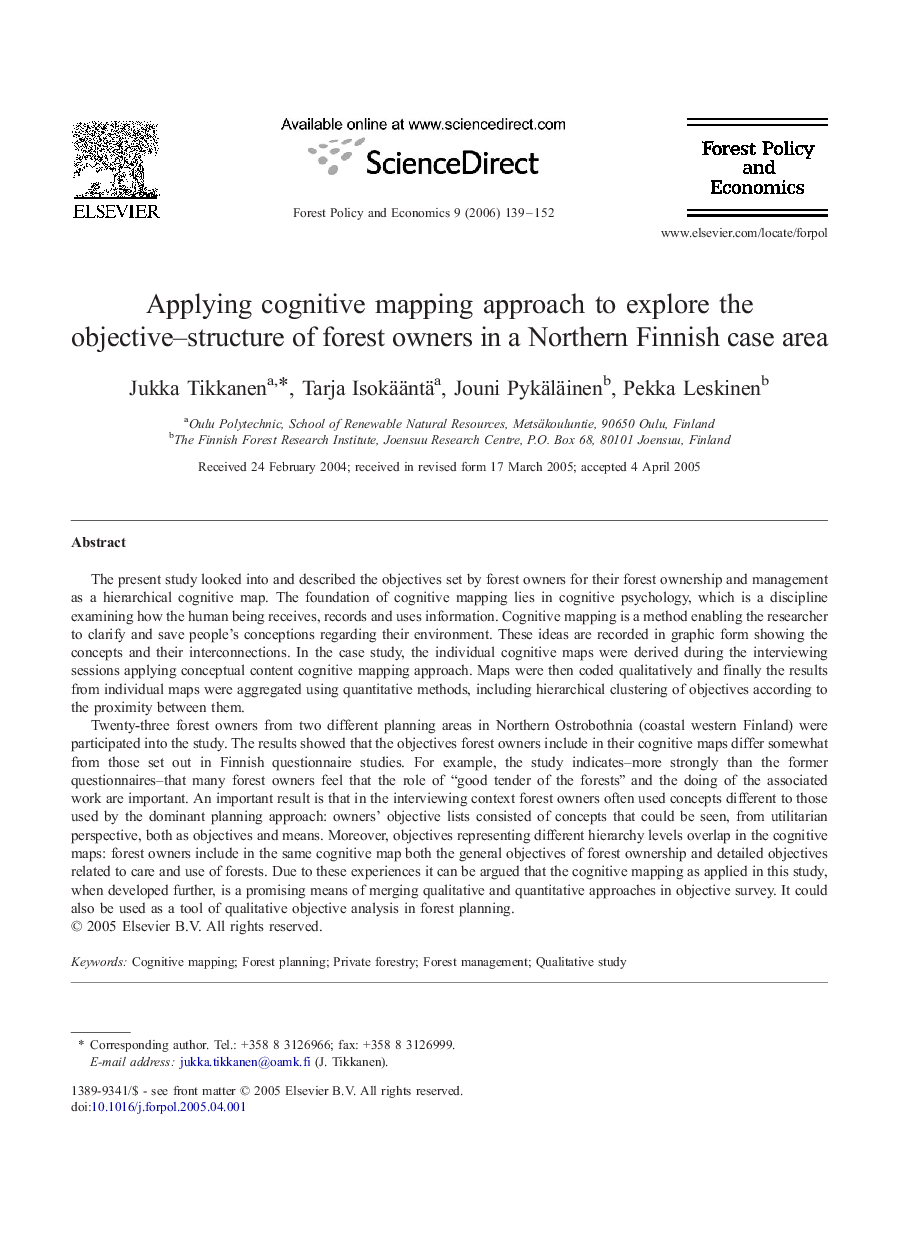| کد مقاله | کد نشریه | سال انتشار | مقاله انگلیسی | نسخه تمام متن |
|---|---|---|---|---|
| 91644 | 159827 | 2006 | 14 صفحه PDF | دانلود رایگان |

The present study looked into and described the objectives set by forest owners for their forest ownership and management as a hierarchical cognitive map. The foundation of cognitive mapping lies in cognitive psychology, which is a discipline examining how the human being receives, records and uses information. Cognitive mapping is a method enabling the researcher to clarify and save people's conceptions regarding their environment. These ideas are recorded in graphic form showing the concepts and their interconnections. In the case study, the individual cognitive maps were derived during the interviewing sessions applying conceptual content cognitive mapping approach. Maps were then coded qualitatively and finally the results from individual maps were aggregated using quantitative methods, including hierarchical clustering of objectives according to the proximity between them.Twenty-three forest owners from two different planning areas in Northern Ostrobothnia (coastal western Finland) were participated into the study. The results showed that the objectives forest owners include in their cognitive maps differ somewhat from those set out in Finnish questionnaire studies. For example, the study indicates–more strongly than the former questionnaires–that many forest owners feel that the role of “good tender of the forests” and the doing of the associated work are important. An important result is that in the interviewing context forest owners often used concepts different to those used by the dominant planning approach: owners' objective lists consisted of concepts that could be seen, from utilitarian perspective, both as objectives and means. Moreover, objectives representing different hierarchy levels overlap in the cognitive maps: forest owners include in the same cognitive map both the general objectives of forest ownership and detailed objectives related to care and use of forests. Due to these experiences it can be argued that the cognitive mapping as applied in this study, when developed further, is a promising means of merging qualitative and quantitative approaches in objective survey. It could also be used as a tool of qualitative objective analysis in forest planning.
Journal: Forest Policy and Economics - Volume 9, Issue 2, 30 November 2006, Pages 139–152